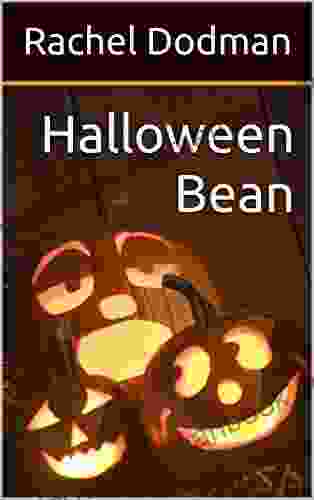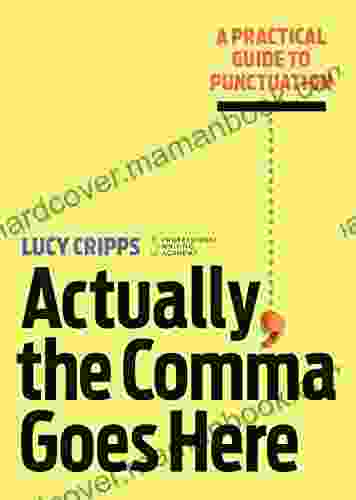The Alluring History of Halloween Bean: Unraveling the Origins of a Beloved Holiday Treat

4.5 out of 5
| Language | : | English |
| File size | : | 1718 KB |
| Text-to-Speech | : | Enabled |
| Enhanced typesetting | : | Enabled |
| Word Wise | : | Enabled |
| Print length | : | 12 pages |
| Lending | : | Enabled |
| Screen Reader | : | Supported |
A Culinary Tradition Steeped in Symbolism
As the crisp autumn air fills the streets and the leaves don their vibrant hues, the allure of Halloween descends upon us. Among the familiar traditions and symbols that define this enchanting time of year, Halloween Bean stands as a confectionery delight with a captivating history. Embarking on a journey through time, we will uncover the origins of this beloved treat, its deep-rooted symbolism, and the captivating evolution that has shaped its iconic status today.
Ancient Roots: A Ritual of Renewal
The genesis of Halloween Bean can be traced back to ancient Celtic cultures, who celebrated the festival of Samhain on October 31st. This momentous occasion marked the end of the harvest season and the transition into the colder months. It was believed that during Samhain, the veil between the worlds of the living and the dead became thin, allowing spirits to roam freely.
As part of the festivities, the Celts engaged in various rituals, including bonfires, costumes, and divinations. Among these traditions, the consumption of beans held particular significance. Beans, symbolizing fertility and abundance, were believed to bring good luck and prosperity in the coming year. They were often roasted over open fires and then eaten as an offering to the spirits.
Medieval Metamorphosis: Supernatural Delights
As Christianity spread throughout Europe, the festival of Samhain gradually evolved into what we now recognize as Halloween. However, many of the ancient customs and beliefs persisted, including the consumption of beans.
During the medieval era, Halloween Bean took on a more supernatural dimension. It was said that witches and otherworldly creatures roamed the streets on Halloween night, and beans were believed to have the power to ward off evil spirits. People would scatter beans outside their homes or throw them at approaching figures to protect themselves from harm.
17th-Century Indulgence: Sweetening the Season
The 17th century witnessed a significant transformation in Halloween Bean. This period saw the rise of sugar as a widely available commodity, leading to the creation of sweetened confections. Beans were coated in molasses or honey, creating a delectable treat that quickly became associated with the holiday.
These sweetened beans, known as "Halloween Beans" or "Candy Beans," gained immense popularity throughout Europe and the Americas. They were sold in markets and fairs, becoming an essential part of Halloween festivities.
19th-Century Innovations: Mass Production and Variety
The industrial revolution of the 19th century introduced mass production techniques that revolutionized the confectionery industry. Halloween Bean embraced these innovations, leading to the creation of vast quantities of the beloved treat.
This period also saw the emergence of different varieties of Halloween Bean. Manufacturers experimented with flavors, colors, and shapes, creating a wide array of options to satisfy every taste. Jelly beans, Jordan almonds, and sugar-coated peas became popular additions to the Halloween Bean repertoire.
20th-Century Icon: A Holiday Staple
The 20th century witnessed the consolidation of Halloween Bean as an iconic symbol of the holiday. Mass marketing campaigns and widespread availability made it a ubiquitous presence in Halloween celebrations.
Halloween Bean became an integral part of trick-or-treating traditions, with children eagerly collecting them from house to house. The treat's popularity extended beyond Halloween itself, becoming a staple in candy bowls and festive gatherings throughout the autumn season.
Modern Interpretations: Endless Possibilities
In recent decades, Halloween Bean has continued to evolve, reflecting the changing tastes and preferences of consumers. Artisanal confectioners have introduced gourmet varieties made with premium ingredients and unique flavor combinations.
Chocolate-covered beans, pumpkin-shaped beans, and even glow-in-the-dark beans have emerged, adding a touch of modernity to the classic treat. Today, Halloween Bean stands as an endless source of culinary inspiration, with countless variations and interpretations available to delight taste buds.
A Timeless Treat: Enduring Charm
Through the centuries, Halloween Bean has remained a beloved and enduring treat, transcending generations and cultures. Its origins in ancient rituals, its evolution into a delectable confection, and its modern-day popularity attest to its enduring charm.
As we celebrate Halloween this year, let us savor the sweet taste of Halloween Bean, a culinary delight that carries with it a captivating story of tradition, symbolism, and timeless enjoyment.
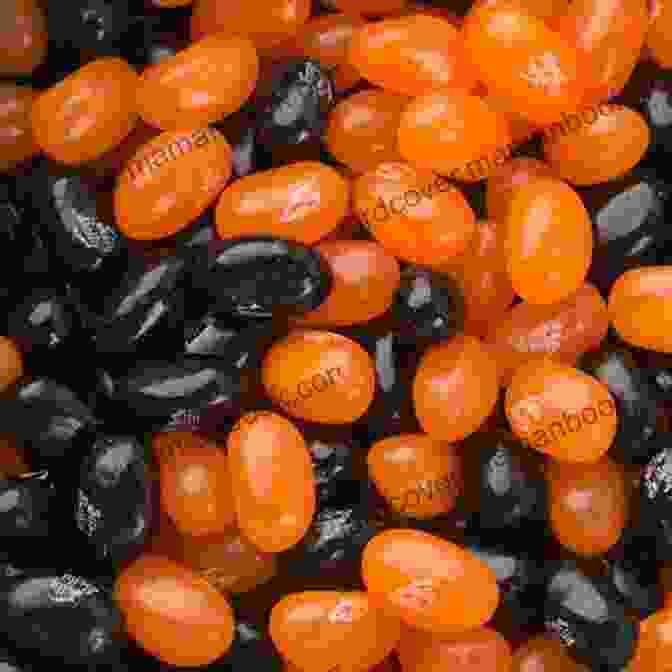
Frequently Asked Questions
- Q: When did Halloween Bean originate?
A: Halloween Bean can be traced back to ancient Celtic rituals during the festival of Samhain, around 2,000 years ago. - Q: What is the symbolism of Halloween Bean?
A: Beans have long symbolized fertility, abundance, and good luck. In ancient Celtic cultures, they were believed to ward off evil spirits during the transition into the colder months. - Q: How did Halloween Bean evolve over time?
A: Halloween Bean has undergone various transformations throughout history. In the medieval era, it took on a supernatural dimension as a protective charm against witches and otherworldly creatures. During the 17th century, it became sweetened with molasses or honey, evolving into a delectable confection. - Q: What are some modern interpretations of Halloween Bean?
A: Contemporary Halloween Bean varieties include gourmet options made with premium ingredients, unique flavor combinations, and innovative shapes. Artisanal confectioners have introduced chocolate-covered beans, pumpkin-shaped beans, and even glow-in-the-dark beans, adding a modern touch to the classic treat. - Q: Why is Halloween Bean such a popular treat today?
A: Halloween Bean's popularity stems from its historical significance, its association with the festive season, and its nostalgic appeal. It remains a beloved treat that connects people across generations, evoking memories and bringing joy during this special time of year.
The journey of Halloween Bean is a captivating narrative that spans centuries, cultures, and culinary traditions. From its humble origins in ancient rituals to its evolution into the iconic treat we know and love today, Halloween Bean has stood the test of time.
As we delve into the history of this beloved confectionery delight, we uncover a rich tapestry of symbolism, innovation, and enduring charm. Halloween Bean continues to captivate our imaginations, bringing sweetness and joy to countless Halloween celebrations, year after year.
4.5 out of 5
| Language | : | English |
| File size | : | 1718 KB |
| Text-to-Speech | : | Enabled |
| Enhanced typesetting | : | Enabled |
| Word Wise | : | Enabled |
| Print length | : | 12 pages |
| Lending | : | Enabled |
| Screen Reader | : | Supported |
Do you want to contribute by writing guest posts on this blog?
Please contact us and send us a resume of previous articles that you have written.
 Top Book
Top Book Novel
Novel Fiction
Fiction Nonfiction
Nonfiction Literature
Literature Paperback
Paperback Hardcover
Hardcover E-book
E-book Audiobook
Audiobook Bestseller
Bestseller Classic
Classic Mystery
Mystery Thriller
Thriller Romance
Romance Fantasy
Fantasy Science Fiction
Science Fiction Biography
Biography Memoir
Memoir Autobiography
Autobiography Poetry
Poetry Drama
Drama Historical Fiction
Historical Fiction Self-help
Self-help Young Adult
Young Adult Childrens Books
Childrens Books Graphic Novel
Graphic Novel Anthology
Anthology Series
Series Encyclopedia
Encyclopedia Reference
Reference Guidebook
Guidebook Textbook
Textbook Workbook
Workbook Journal
Journal Diary
Diary Manuscript
Manuscript Folio
Folio Pulp Fiction
Pulp Fiction Short Stories
Short Stories Fairy Tales
Fairy Tales Fables
Fables Mythology
Mythology Philosophy
Philosophy Religion
Religion Spirituality
Spirituality Essays
Essays Critique
Critique Commentary
Commentary Glossary
Glossary Bibliography
Bibliography Index
Index Table of Contents
Table of Contents Preface
Preface Introduction
Introduction Foreword
Foreword Afterword
Afterword Appendices
Appendices Annotations
Annotations Footnotes
Footnotes Epilogue
Epilogue Prologue
Prologue Lee Parks
Lee Parks Lawrence Sanders
Lawrence Sanders Jill Croydon
Jill Croydon Dg Rampton
Dg Rampton Tom Bober
Tom Bober Elizabeth Heiskell
Elizabeth Heiskell Dan Hampton
Dan Hampton Sage Kafsky
Sage Kafsky Lynne Burke
Lynne Burke James A Robinson
James A Robinson Jeremy Taylor
Jeremy Taylor Martha Stewart
Martha Stewart Rob Gifford
Rob Gifford James Byrne
James Byrne Kathy Trusty
Kathy Trusty Mandisa Watts
Mandisa Watts Nathan Hystad
Nathan Hystad Jan Bernard
Jan Bernard C Scott Anderson
C Scott Anderson L J Shen
L J Shen
Light bulbAdvertise smarter! Our strategic ad space ensures maximum exposure. Reserve your spot today!

 Ian MitchellFrom War to Wonder: The Astonishing Transformation of a Former Military Base...
Ian MitchellFrom War to Wonder: The Astonishing Transformation of a Former Military Base... Randy HayesFollow ·7.5k
Randy HayesFollow ·7.5k Dominic SimmonsFollow ·15.4k
Dominic SimmonsFollow ·15.4k Cade SimmonsFollow ·14.1k
Cade SimmonsFollow ·14.1k August HayesFollow ·12.6k
August HayesFollow ·12.6k Marcus BellFollow ·14.1k
Marcus BellFollow ·14.1k Jarrett BlairFollow ·3.5k
Jarrett BlairFollow ·3.5k Aleksandr PushkinFollow ·5.9k
Aleksandr PushkinFollow ·5.9k Noah BlairFollow ·2.9k
Noah BlairFollow ·2.9k

 Eugene Powell
Eugene PowellComplete Guide to Using Yoga With Kids: Benefits, Tips,...
Yoga is an ancient practice that has been...

 Benji Powell
Benji PowellHow to Make $000 Per Week on Craigslist
Are you looking for a way to make extra money...

 Gabriel Garcia Marquez
Gabriel Garcia MarquezGrocery Row Gardening: The Exciting New Permaculture...
Kick-start your gardening journey with the...
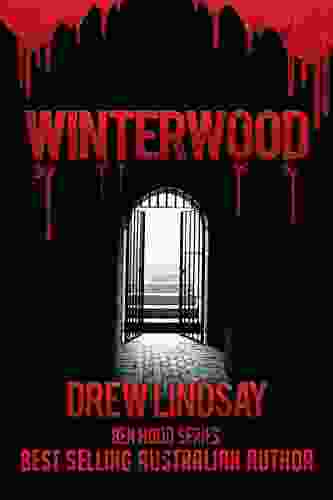
 Hayden Mitchell
Hayden MitchellUnveiling the Gripping World of Winterwood: Ben Hood...
In the annals of crime thrillers, the...

 E.M. Forster
E.M. ForsterThe Financial Advisor Guide To Managing and Investing...
As a financial...
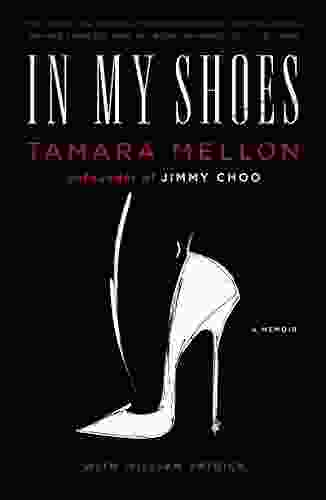
 Lee Simmons
Lee SimmonsIn My Shoes Memoir: A Poignant Journey of Resilience,...
In the tapestry of life, adversity often...
4.5 out of 5
| Language | : | English |
| File size | : | 1718 KB |
| Text-to-Speech | : | Enabled |
| Enhanced typesetting | : | Enabled |
| Word Wise | : | Enabled |
| Print length | : | 12 pages |
| Lending | : | Enabled |
| Screen Reader | : | Supported |


